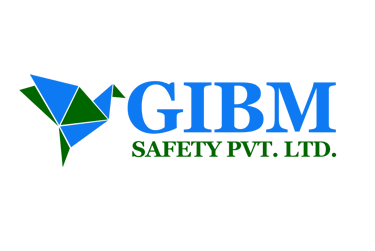Talk About Safety Culture
You know what? I've been thinking a lot about workplace safety lately. Not because I'm some safety fanatic (though my friends might disagree), but because I keep seeing these stories that just... stick with you, you know?
BLOG
7/27/20255 min read


Let's Talk About Safety Culture
(And Why It Actually Matters More Than You Think)
You know what? I've been thinking a lot about workplace safety lately. Not because I'm some safety fanatic (though my friends might disagree), but because I keep seeing these stories that just... stick with you, you know?
Like this one company that got fined £800k after someone was killed by a forklift. Eight hundred thousand pounds. Because they didn't have proper training. Because nobody really cared about safety until it was too late.
And that got me wondering—what makes some workplaces super safe while others are disasters waiting to happen? Turns out, it's not really about the rules or the equipment. It's about something much more interesting: culture.
Here's a story that changed my perspective: I was visiting a friend's manufacturing plant last year, and something weird happened. A worker spotted a small oil spill and immediately stopped what he was doing to clean it up. Not because his boss was watching. Not because it was "his job." He just... did it. When I asked him why, he shrugged and said, "Someone could slip. We look out for each other here." That's when it clicked for me.
So What Actually IS Safety Culture?
Think of safety culture like the "vibe" of your workplace, but specifically about how people think and act regarding safety. According to BritSafe research, it's basically "the shared values, beliefs, attitudes, and behaviours regarding safety within an organisation."
Sounds fancy, right?
But really, it's simpler than that. It's whether your team members:
Actually wear their safety gear (even when nobody's watching)
Speak up when they see something dangerous
Help each other stay safe
Think "safety first" is more than just a poster on the wall
The "Oh Crap, This Actually Works" Moment
I used to think safety culture was just corporate speak for "follow the rules or else." But then I started digging into the numbers, and honestly? I was shocked. Companies with strong safety cultures don't just have fewer accidents—they're actually more profitable, more productive, and have happier employees.
🎯 Here's What Good Safety Culture Actually Delivers:
Fewer accidents: Obviously, but by like 40-70% fewer
Higher productivity: People work better when they're not worried about getting hurt
Lower turnover: Employees stay longer at companies that actually care about them
Better reputation: Word gets around about good places to work
The TSW research I came across shows that when everyone in an organization receives proper training and can report incidents without fear, magic happens. Well, not actual magic. But you know what I mean.
The Leadership Thing (Yeah, It Starts at the Top)
Here's what nobody tells you: safety culture fails when managers pay lip service to safety but cut corners when deadlines loom.
You know the type.
They say "Safety first!" in the Monday meeting, then ask why production is slow when someone stops to fix a broken guardrail. Mixed messages much?
Real talk: I've seen managers who talk a big safety game but then walk past obvious hazards without saying anything. Your team notices. They always notice. And if you don't care enough to stop and address it, why should they?
The "8 Steps" Everyone Talks About
Look, I'm not usually one for numbered lists, but there's this 8-step framework that actually makes sense:
1. Write a decent health and safety policy
(Not one of those generic templates that nobody reads)
2. Train everyone. Seriously, everyone.
(Including temp staff, contractors, and yes, even the CEO)
3. Give people the tools and resources they need
(Working safety equipment, not the stuff from 1987)
4. Make communication actually work
(People should feel safe reporting problems, not fear getting blamed)
5. Notice and reward good safety behavior
(Catch people doing things right for a change)
6. Lead by example
(Walk the talk, don't just talk the talk)
7. Keep things positive
(Nobody wants to work in a fear-based environment)
8. Remember mental health matters too
(Stressed, anxious people make more mistakes)
The Training Part (Where Most Companies Mess Up)
Here's where it gets interesting. Most companies think safety training means showing a dusty video from 2003 and calling it done. But according to National Safety Council data, effective safety training is ongoing, engaging, and actually relevant to what people do every day.
I remember this one safety training session where the instructor made us practice emergency procedures using actual scenarios from our workplace. Not generic "if there's a fire" stuff, but "if there's a chemical spill in bay 3 while the ventilation system is down for maintenance." Suddenly, everyone was paying attention. Because it was real. It could actually happen to us.
The best safety training programs I've seen share a few things:
They're specific to your actual work environment
They're updated regularly (not the same content from five years ago)
They involve hands-on practice, not just talking
They encourage questions and discussion
They connect safety to things people actually care about
The Regional Twist
Now, if you're operating in diverse markets—let's say you're a company in Goa dealing with different industries, local regulations, and cultural contexts—things get more interesting.
You can't just copy-paste a safety program from somewhere else and hope it works.
Smart organizations like GIBM Pvt. Ltd. and their subsidiary RFireSafety Pvt. Ltd. in Panjim get this. They develop customer-tailored safety training programs that address regional challenges while maintaining global safety standards. It's not about lowering standards—it's about making them relevant and effective in local contexts.
💡 Pro Tip:
The best safety cultures I've encountered have this weird thing where people genuinely care about each other's wellbeing. It's not about following rules—it's about looking out for your teammates. You can't mandate that kind of caring, but you can create conditions where it flourishes.
The Measurement Game
Okay, so how do you know if your safety culture is actually working? You can't exactly measure "vibes," right?
Well, actually, you kind of can.
Smart companies track things like:
Number of near-miss reports (more reports = people feel safe speaking up)
Employee safety survey results
Participation rates in safety training
How quickly safety issues get resolved
Accident rates and severity
But here's the thing that really matters: are people comfortable bringing up safety concerns? If your team is reporting near-misses and suggesting improvements, you're probably on the right track.
The Future of Safety Culture
The safety world is changing fast. We've got new technology, new ways of working (hello, remote work safety), and new understanding of how psychology affects safety behavior. But the core principle remains the same: people need to feel valued and protected.
Whether it's AI-powered safety monitoring or VR training simulations, technology is just a tool. The real magic happens when people genuinely care about keeping each other safe.
One last thing: Building a safety culture isn't a one-and-done project. It's more like tending a garden. You need to keep nurturing it, or it withers away. But when you get it right? When safety becomes part of your company's DNA? That's when you realize it was worth every effort.
The Bottom Line
Safety culture isn't just about preventing accidents (though that's pretty important). It's about creating workplaces where people can do their best work without worrying about getting hurt. Where they feel valued. Where they look out for each other.
And honestly? In today's world, where good employees have choices about where they work, having a reputation as a company that genuinely cares about safety isn't just nice to have—it's a competitive advantage.
Because at the end of the day, everyone deserves to go home safe. Every single day.
" Building Industry Excellence. "
Contact Us
helpdesk@gibmsafety.com
+91 9136088864
© 2025. All rights reserved.


helpdesk@rfiresafety.com
Conversation
